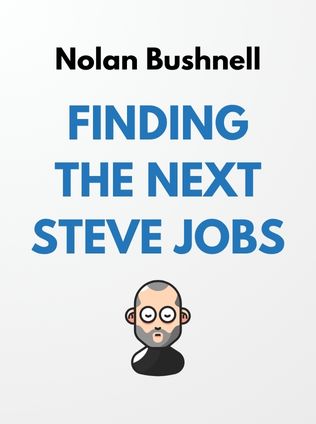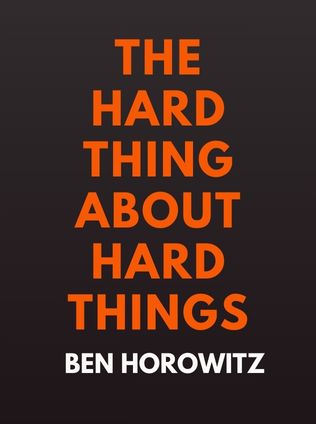
Finding the Next Steve Jobs
How to Find, Hire, Keep and Nurture Creative Talent
By Nolan Bushnell,
Published 09/2013
About the Author
Nolan Bushnell, a pioneering figure in the video game industry, founded Atari in 1972 and later Chuck E. Cheese's. He has started more than 25 companies and has been recognized by numerous industry honors, including inductions into the Video Game Hall of Fame and the Consumer Electronics Association Hall of Fame. Newsweek named him one of the "50 Men Who Changed America." Bushnell's innovative spirit is evident in his ability to foresee the impact of technology on entertainment and business.
Gene Stone is an accomplished editor and ghostwriter, having worked with major publications such as The Los Angeles Times, Esquire, and Simon & Schuster. He has ghostwritten 30 books, many of which became New York Times bestsellers. Stone has also authored several books under his name, including "The Secrets of People Who Never Get Sick" and "Forks Over Knives." His collaboration with Bushnell in "Finding the Next Steve Jobs" blends his editorial expertise with Bushnell's visionary insights into nurturing creativity and innovation.
Main Idea
"Finding the Next Steve Jobs" by Nolan Bushnell with Gene Stone is a guide on how to attract, hire, and retain creative talent. The book emphasizes the necessity of creativity in the modern business landscape and provides unconventional strategies for identifying and nurturing individuals who have the potential to drive innovation within a company. Bushnell's experiences, particularly his early employment of Steve Jobs, provide a foundation for his insights into fostering an environment where creativity can thrive.
Table of Contents
- Introduction
- Finding and Hiring the Next Steve Jobs
- Keeping and Nurturing the Next Steve Jobs
Introduction
The introduction sets the stage for the book's central theme: the vital role of creativity in business success. Bushnell argues that rigid rules and uniformity stifle imagination and innovation. He introduces the concept of "pongs," flexible guidelines that allow for adaptability and creativity. This approach contrasts with the traditional rule-based management styles that dominate many corporations.
"A 'pong' is a piece of advice that applies only where it is helpful and needed, unlike a rule, which thinks of itself as applicable to every situation." - Nolan Bushnell
The introduction highlights the need for companies to foster an environment where creativity can flourish, emphasizing that without creativity, businesses cannot succeed. This foundational idea underpins the strategies and insights provided throughout the book.
Finding and Hiring the Next Steve Jobs
In this section, Bushnell outlines various unconventional methods for identifying and attracting creative talent. He stresses the importance of looking beyond traditional credentials and focusing on passion, curiosity, and intensity.
Make Your Workplace an Advertisement for Your Company
To attract creative individuals, Bushnell advises companies to present themselves as vibrant, innovative places to work. A company's culture should be evident through every interaction, from its website to its physical office space.
- Creative Environment: Design spaces that inspire creativity, such as open offices, collaborative areas, and aesthetically pleasing environments.
- Showcase Innovation: Highlight innovative projects and initiatives on your company's website and in recruitment materials.
"Atari didn't find Steve Jobs. The company made it easy for him to find it." - Nolan Bushnell
Bushnell emphasizes that a dynamic and creative work environment naturally attracts creative talent. When employees see that a company values and nurtures creativity, they are more likely to be drawn to it.
Adopt Flexible Pongs
Managing creative individuals requires flexibility and a willingness to adapt. Bushnell introduces the concept of "pongs," which are flexible guidelines that allow for individual creativity and adaptability.
- Allow Flexibility: Give employees the freedom to choose their work hours, workspace, and methods.
- Encourage Experimentation: Allow employees to explore new ideas and approaches without fear of failure.
"When you're trying to make your company more creative, you want to relax the rigid rules and give your creatives more room to stretch and grow." - Nolan Bushnell
Bushnell illustrates this point with an example from Atari, where flexibility in work hours led to increased productivity and creativity. By allowing employees to work in a way that suited them best, the company was able to harness their full creative potential.
Hire for Passion and Intensity, Ignore Credentials
Traditional hiring practices often prioritize credentials over passion and intensity. Bushnell argues that this approach overlooks individuals who may not have formal qualifications but possess the drive and creativity needed for innovation.
- Focus on Passion: Look for candidates who demonstrate a genuine passion for their work and have a track record of pursuing their interests intensely.
- Curiosity and Resourcefulness: Hire individuals who are curious, resourceful, and have a broad base of knowledge in various fields.
"If there was a single characteristic that separated Steve Jobs from the mass of employees, it was his passionate enthusiasm." - Nolan Bushnell
Bushnell highlights that many successful creatives, including Steve Jobs, did not have traditional academic credentials. Instead, their passion and curiosity drove them to innovate and succeed.
Sign up for FREE and get access to 1,400+ books summaries.
You May Also Like
The Lean Startup
How Today's Entrepreneurs Use Continuous Innovation to Create Radically Successful Businesses
By Eric RiesWho Moved My Cheese?
An Amazing Way to Deal with Change in Your Work and in Your Life
By Spencer Johnson, M.D.Make Your Bed
Little Things That Can Change Your Life...And Maybe the World
By William H. McRavenThe Ride of a Lifetime
Lessons Learned from 15 Years as CEO of the Walt Disney Company
By Robert IgerThe Hard Thing About Hard Things
Building a Business When There Are No Easy Answers
By Ben Horowitz



















